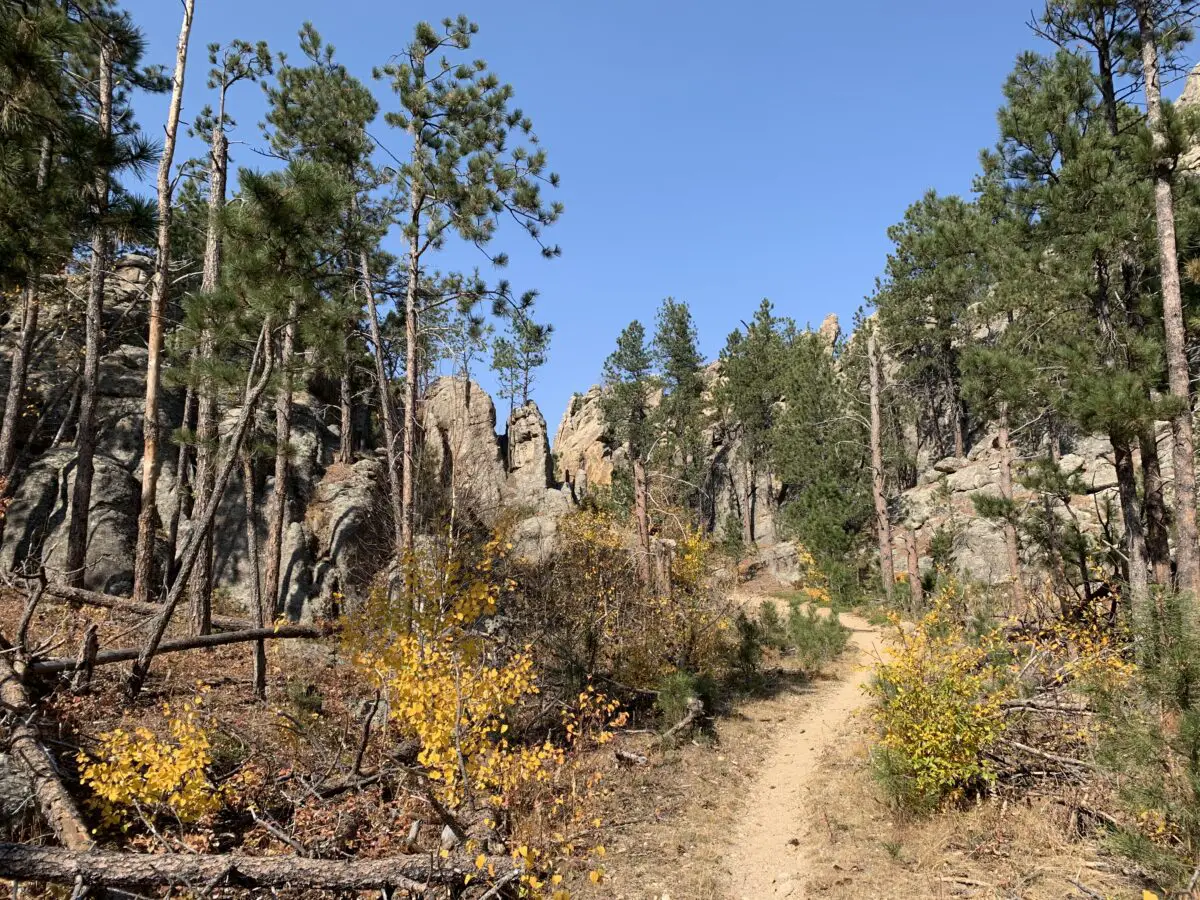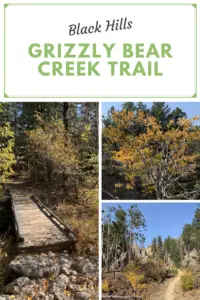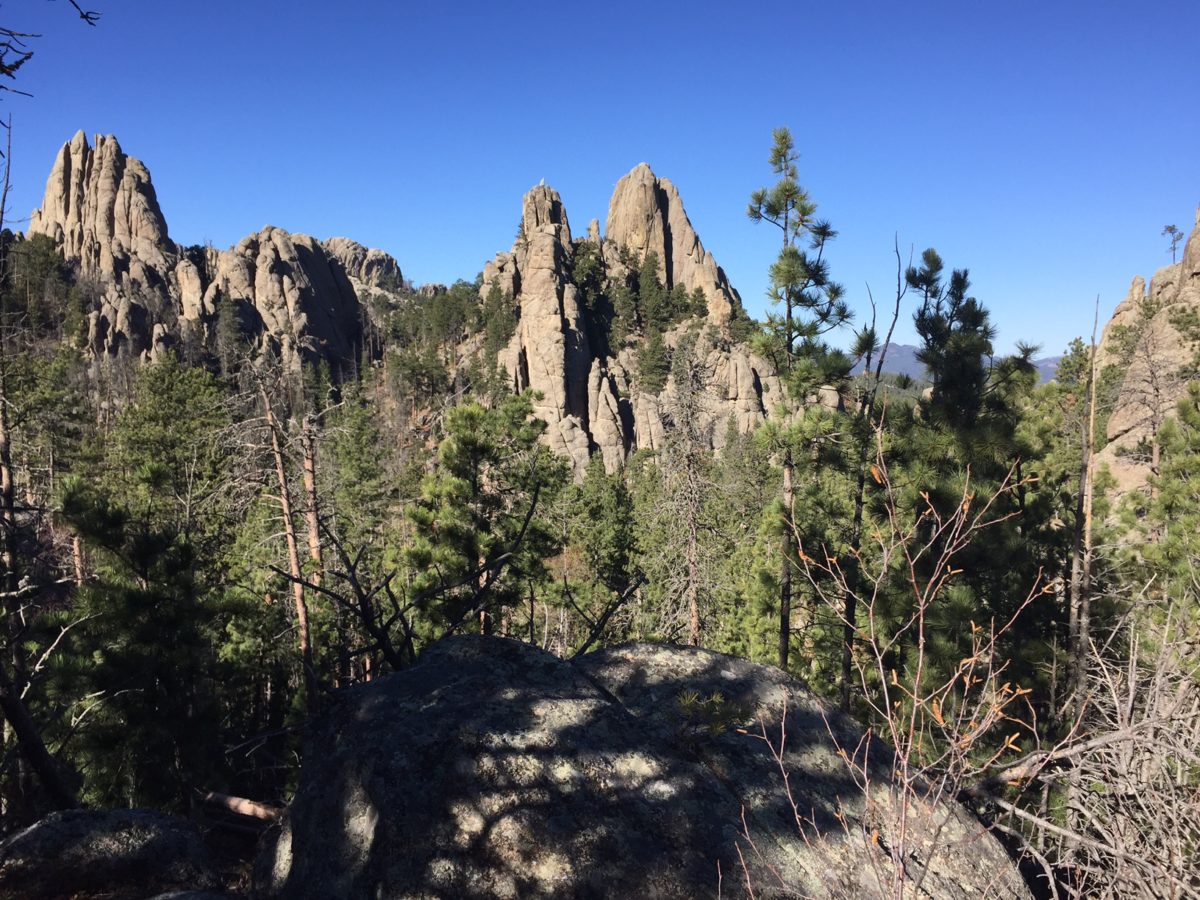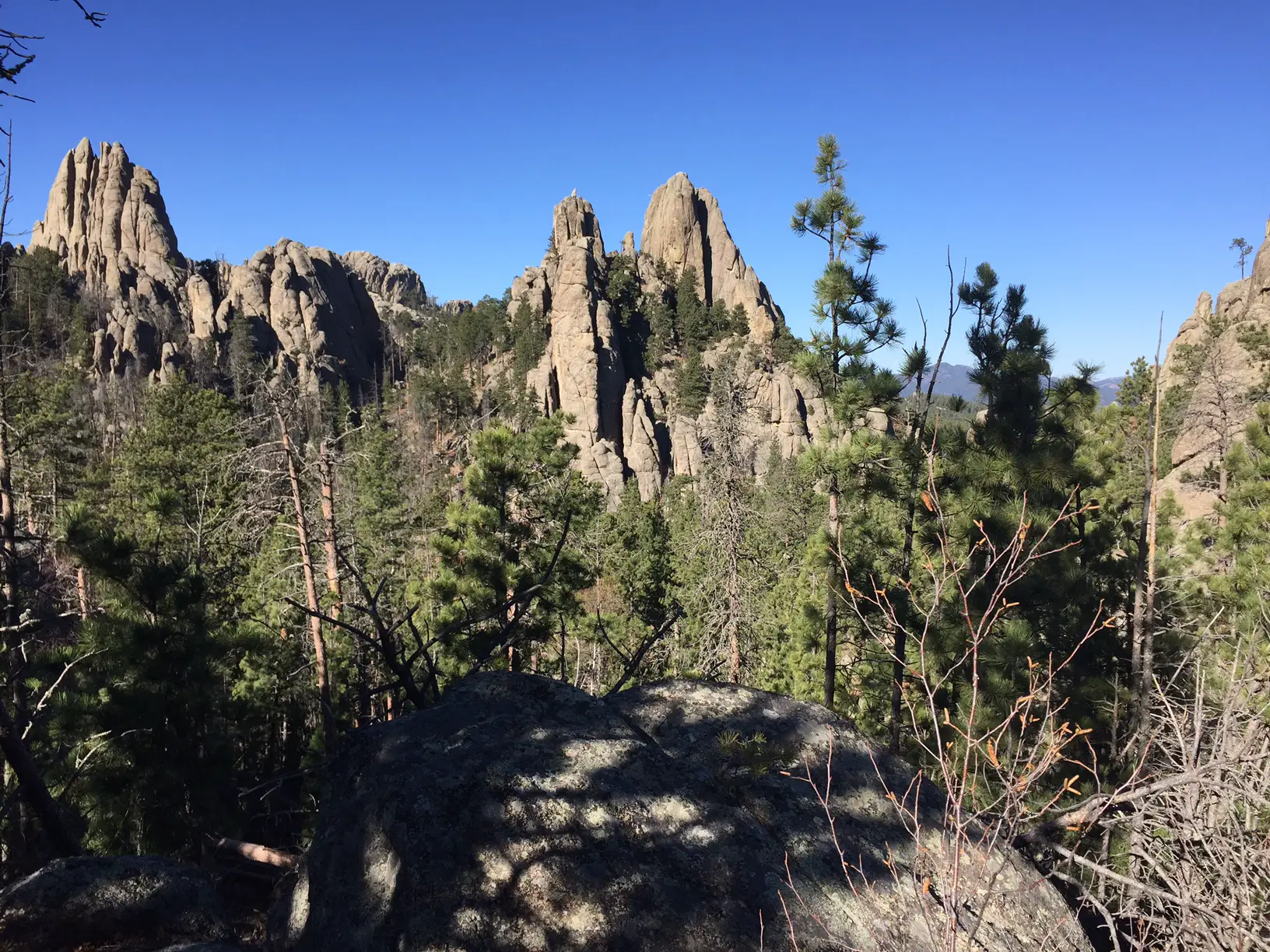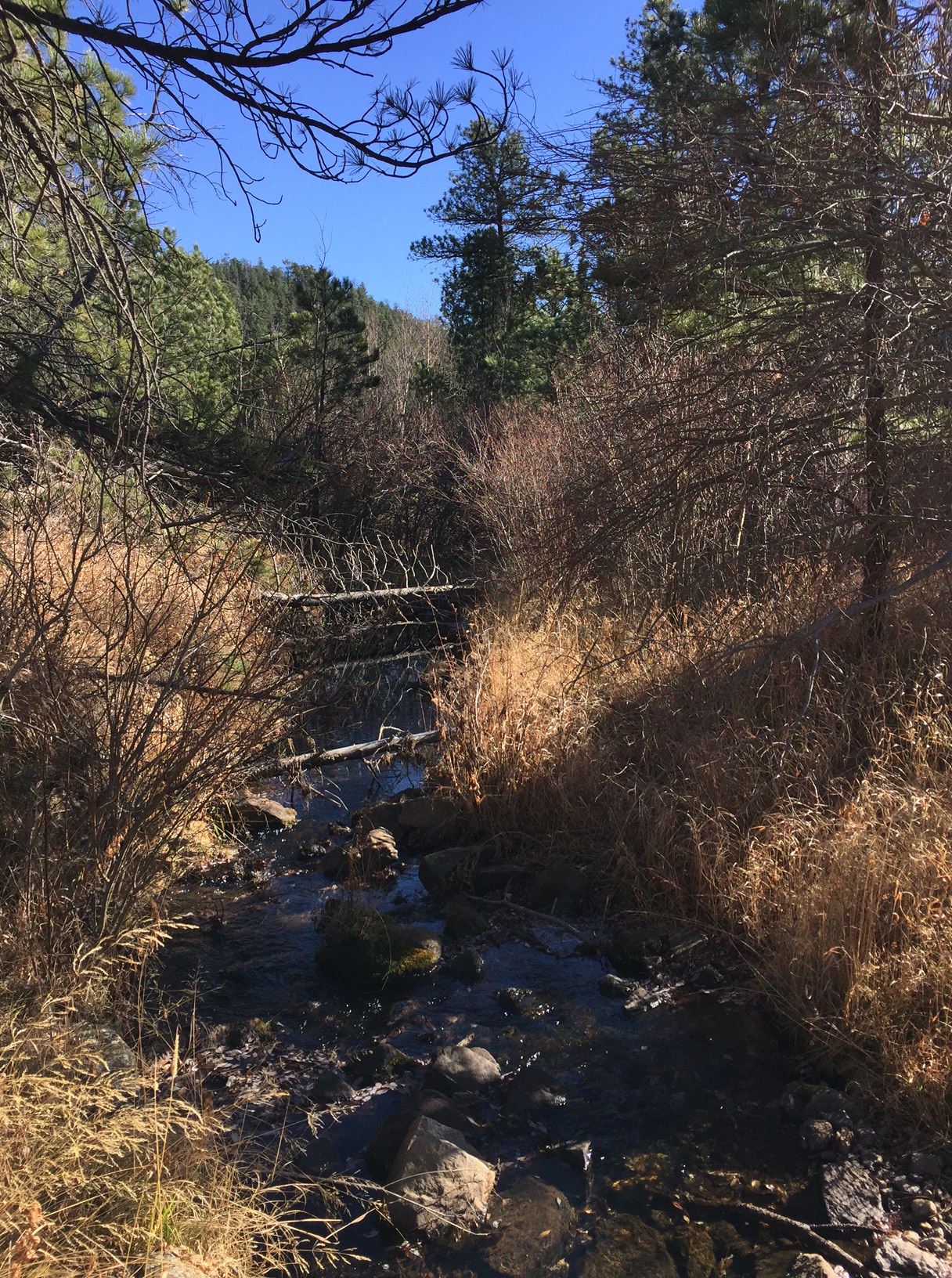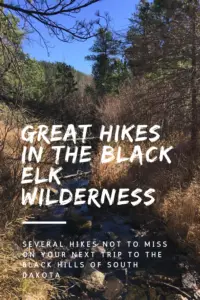I’ve mentioned before how much I enjoy hiking in the Harney Range and the Black Elk Wilderness area of the Black Hills. Well, the Grizzly Bear Creek Trail is one of my favorite routes in that locale.
Because this trail is located in the wilderness area, it isn’t maintained as much as the surrounding national forest. There isn’t a lot of logging here and ranchers aren’t able to use this land to graze their herds, so you don’t have to worry about the “leavings” of cows. There also aren’t any people living nearby. Therefore, it’s really just left to Mother Nature. It’s natural, beautiful, and rugged.
What will you see on the Grizzly Bear Creek Trail?
This path is interesting because it doesn’t really “go” anywhere, per se. It’s really just a connector trail that meanders through the lower-lying areas of the Black Elk Wilderness.
This trail isn’t one of the more popular ones in the Black Hills so it’s rarely busy, no matter the time of year. It also tends to be VERY pretty, as it traverses canyons and valleys. A bubbling creek also accompanies you along much of the route’s length, which makes a pleasant accompaniment to your hike. It usually has water in it which can be rare in this part of the country (many local waterways dry up at certain times of the year).
The constant presence of water means this is a more verdant part of the Hills in regards to foliage and it’s a beautiful and colorful area to visit during the fall. This is also one of the easier trails found locally, with just simple, rolling hills to challenge you. In addition to the lovely foliage, you will also be treated to views of the towering spires and imposing rock walls created by the granite the Black Hills is known for.
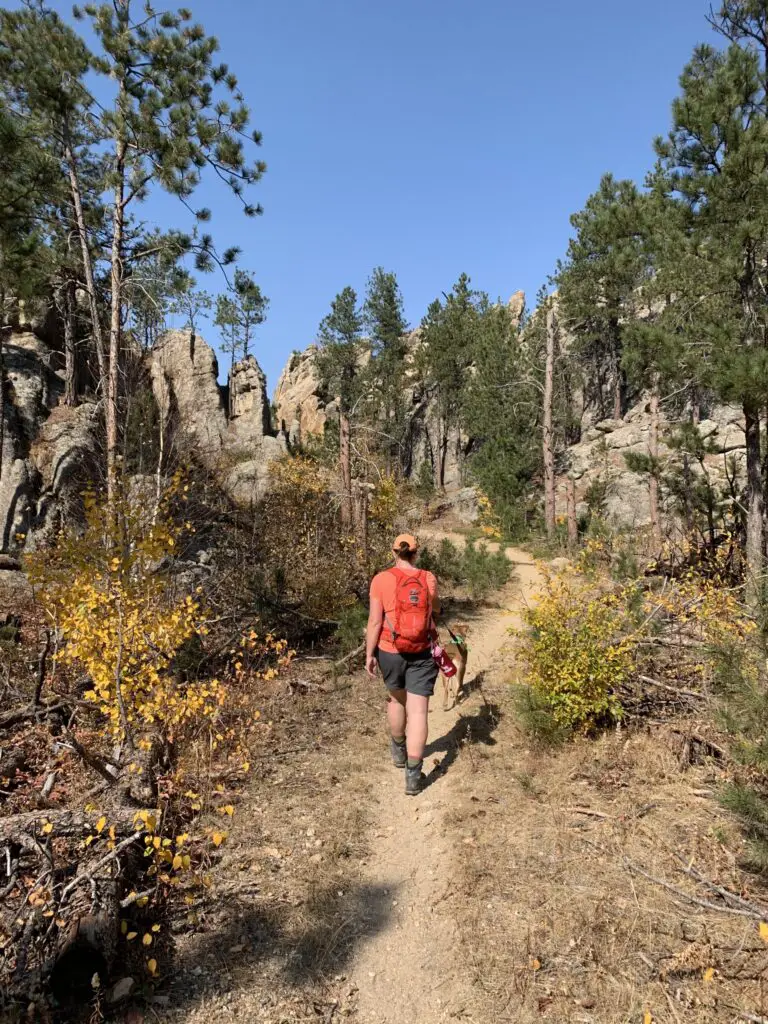
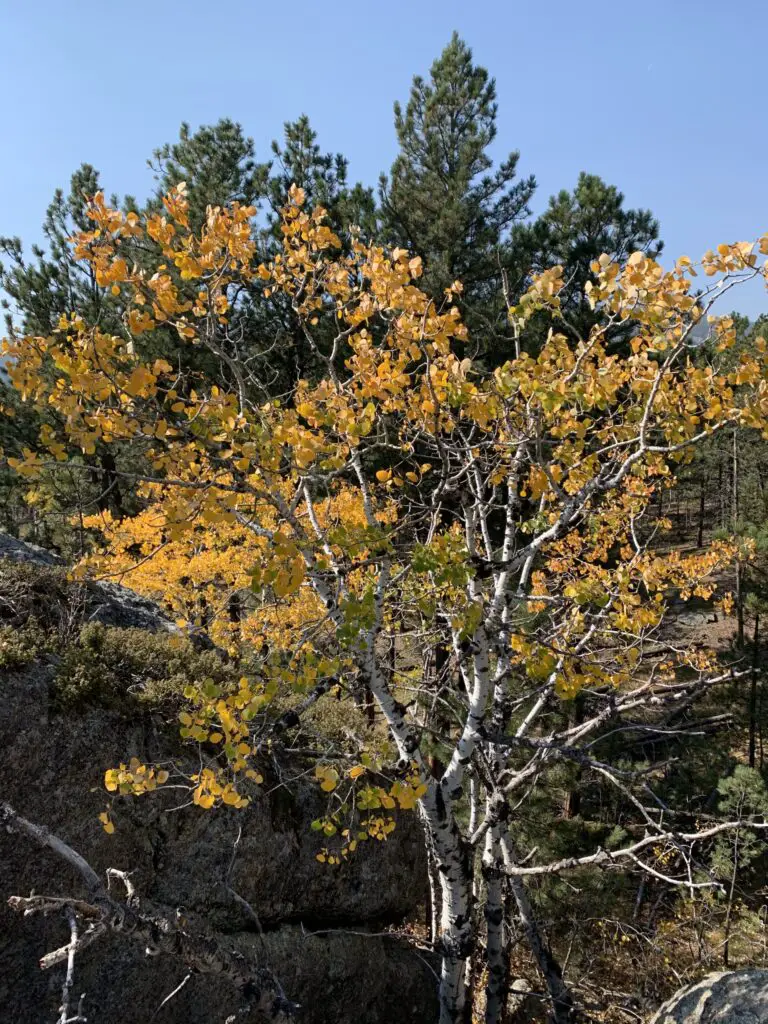
Where is the Grizzly Bear Creek Trail?
The Grizzly Bear Creek Trail does have a trailhead of its own. You will find it off of Forest Road 345 after it branches off of State Route 87 (also called the Needles Highway) in the northern portion of Custer State Park. As it is a connector trail you can also access it from a number of other routes in the Black Elk Wilderness, including the Black Elk Peak Trail (formerly the Harney Trail), the Centennial, the Horsethief Lake, and the Norbeck Trails.
How long is the Grizzly Bear Creek Trail?
The trail is about 13 miles in total length. If you just want to hike portions of the route, you can do out-and-back treks, or you can connect this path with several other trails in the local area to make a variety of loops. These can be shorter, day hikes or longer, multi-day backpacking trips. All of them make for a great way to see the rugged beauty of the higher elevations of the central Black Hills.
Related posts: Great Hikes in the Black Elk Wilderness; Black Hills Blackberry Trail, near Mt. Rushmore
When is the best time of year to hike the Grizzly Bear Creek Trail?
While the Grizzly Bear Creek trail can be enjoyed at any time of the year, the warmer months are a better time to access it. It would be beautiful in the winter, though it would be difficult to get to the trailhead as neither the forest road nor the Needles Highway is maintained during the snowy season. As this is one of the highest elevation areas in the Black Hills, you should also expect to encounter, potentially, feet of snow throughout much of the winter.
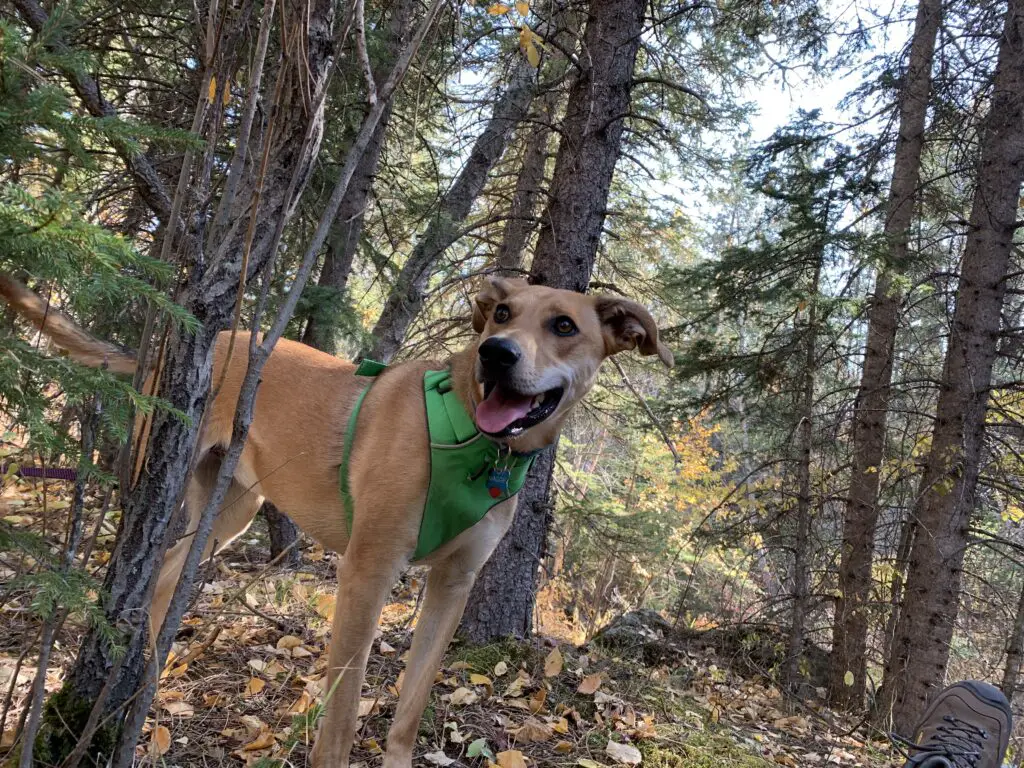
Because you are so close to the creek for much of the trail’s route, there are also a number of water crossings along its length. You should be prepared for this and have either waterproof shoes or footwear you don’t mind getting wet.
Some of the crossings have rocks you can hop across, though the availability of these will depend on the depth of the water, which can vary greatly throughout the year. These stones can also become mossy and slippery so you should use them with caution.
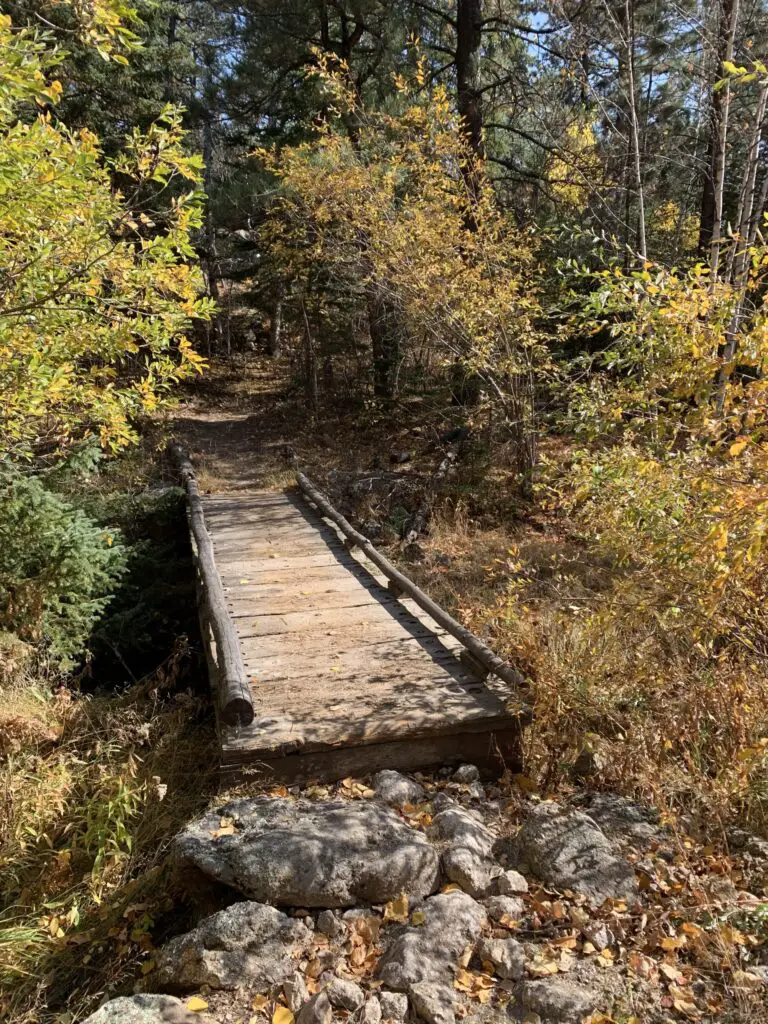
If you’re looking for a less-traveled but beautiful hike in the Black Hills, check out the Grizzly Bear Creek Trail!
Have you ever hiked this trail? What did you think? Tell me about it in the comments!
Did you enjoy reading this post? Pin it!
Like what you read here today? Please feel free to leave a comment, like or share this post! Add your email at the bottom of the page, or the sidebar to the right, to be notified when a new post is published. By signing up for the email list, you will also receive a free copy of the Tranquil Trekker’s Top 10 Tips of Trekking Do’s and Don’ts!
You can also follow the blog on social media by clicking the links below!
